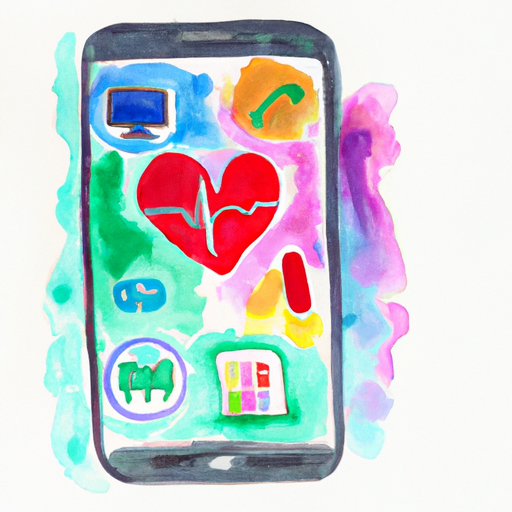In today's digital age, healthcare apps have become an essential tool for both patients and healthcare providers. These apps not only provide convenience and accessibility, but they also have the potential to revolutionize the healthcare industry. However, building a successful healthcare app is no easy feat. It requires a deep understanding of the healthcare app landscape, an intuitive user experience design, and careful navigation of regulatory challenges. In this article, we will explore these key factors for success in healthcare app development. We will discuss the importance of understanding the healthcare app landscape and the factors that contribute to success. We will also delve into strategies for designing an intuitive user experience that engages and satisfies healthcare app users. Lastly, we will explore the regulatory challenges that developers face and discuss how to ensure compliance and security in healthcare app development. By the end of this article, you will have a comprehensive understanding of what it takes to build a successful healthcare app that meets the needs of both patients and healthcare providers.
1. "Understanding the Healthcare App Landscape: Key Factors for Success"
When it comes to building a successful healthcare app, it is crucial to understand the landscape in which it operates. The healthcare industry is highly regulated, complex, and constantly evolving. Therefore, developers need to consider several key factors that can contribute to the success of their healthcare app.
1. Compliance with Regulatory Requirements: Healthcare apps must adhere to strict regulatory guidelines to ensure patient safety and privacy. Developers should be well-versed in regulations such as the Health Insurance Portability and Accountability Act (HIPAA) and the General Data Protection Regulation (GDPR). Building a compliant app not only protects sensitive patient information but also establishes trust with users and healthcare providers.
2. Integration with Existing Healthcare Systems: Successful healthcare apps seamlessly integrate with existing healthcare systems such as electronic health records (EHRs) and hospital management systems. This integration allows for efficient data sharing, streamlined workflows, and improved patient care. Developers should consider interoperability standards like HL7 and FHIR to ensure smooth data exchange between different healthcare systems.
3. User-Centric Design: Healthcare apps are designed to serve patients, healthcare professionals, or both. Understanding the needs and preferences of the target users is crucial for success. User-centric design principles should be applied to create intuitive, easy-to-use interfaces that enhance user engagement and satisfaction. Conducting user research, usability testing, and gathering feedback throughout the development process can help refine the app's design and meet user expectations.
4. Security and Privacy: Healthcare apps handle sensitive personal health information, making data security and privacy a top priority. Robust security measures, such as encryption, secure authentication, and access controls, should be implemented to protect patient data from unauthorized access or breaches. Regular security audits and updates are necessary to address emerging threats and vulnerabilities.
5. Scalability and Performance: As healthcare apps gain popularity and acquire more users, they need to be scalable and perform efficiently under increased load. Developers should adopt scalable architecture, cloud infrastructure, and reliable hosting services to handle growing user demands. Monitoring and
2. "Designing an Intuitive User Experience: Strategies for Engaging Healthcare App Users"
When it comes to developing a successful healthcare app, designing an intuitive user experience is crucial for engaging and retaining users. Users should be able to navigate through the app easily and find the information or services they need without any confusion or frustration. Here are some strategies to consider when designing the user experience for a healthcare app:
1. Understand the Target Audience: Before diving into the design process, it is important to have a clear understanding of the target audience for the healthcare app. Consider factors such as age, technological literacy, and specific healthcare needs. This knowledge will help in creating a user interface that is tailored to the needs and preferences of the users.
2. Simplify Navigation: A healthcare app should have a simple and intuitive navigation system that allows users to easily access different features and functionalities. Use clear and descriptive labels for buttons and menus to guide users through the app. Consider using a bottom navigation bar or a hamburger menu to keep the navigation organized and easily accessible.
3. Prioritize Information: In a healthcare app, it is important to prioritize the information that users are most likely to seek. Display relevant and important information prominently on the screen, such as appointment details, test results, or medication reminders. Use visual cues, such as color or icons, to highlight important notifications or alerts.
4. Use Consistent Design Elements: Consistency in design is key to creating an intuitive user experience. Maintain a consistent color scheme, typography, and layout throughout the app to provide a cohesive and familiar experience for users. This will help users easily recognize and understand different sections or features of the app.
5. Incorporate User Feedback: Regularly gather feedback from users through surveys, ratings, or user testing sessions. Use this feedback to improve the design and functionality of the app. Incorporating user feedback not only enhances the user experience but also helps in building trust and loyalty among the app users.
6. Provide Onboarding and Support: When users first download and open the healthcare app, it is important to provide
3. "Navigating Regulatory Challenges: Ensuring Compliance and Security in Healthcare App Development"
Developing a healthcare app comes with its own set of unique challenges, particularly when it comes to navigating regulatory requirements and ensuring compliance and security. The healthcare industry is highly regulated to protect patient privacy, safety, and data security. As such, healthcare app developers must be well-versed in the legal and regulatory landscape to build successful and compliant applications.
One of the major regulatory challenges in healthcare app development is complying with the Health Insurance Portability and Accountability Act (HIPAA) in the United States. HIPAA sets the standards for protecting sensitive patient data, known as protected health information (PHI). Any app that handles PHI must adhere to strict security and privacy measures to ensure compliance. This includes implementing robust encryption methods, secure data storage, access controls, and regular security audits.
Another important regulation to consider is the General Data Protection Regulation (GDPR) in the European Union. If your healthcare app operates in EU countries or deals with EU citizens' data, it must comply with GDPR requirements. GDPR focuses on protecting individuals' personal data, including health-related information. Developers need to obtain explicit consent from users, provide transparency in data handling practices, and ensure data portability and erasure.
Apart from HIPAA and GDPR, there may be other regional or national regulations that need to be followed depending on the target market. For instance, the Food and Drug Administration (FDA) in the United States regulates medical devices and certain health apps. It is essential to understand the specific regulations governing medical devices and seek FDA clearance if required.
To successfully navigate these regulatory challenges, healthcare app developers should collaborate closely with legal and compliance experts. These professionals can provide guidance on regulatory requirements, help draft privacy policies and terms of service, and ensure the app meets all necessary standards. It is important to involve them from the early stages of development to identify potential compliance issues and address them proactively.
Moreover, regular audits and security assessments should be conducted throughout the app's lifecycle to ensure ongoing compliance and security. This includes vulnerability testing


